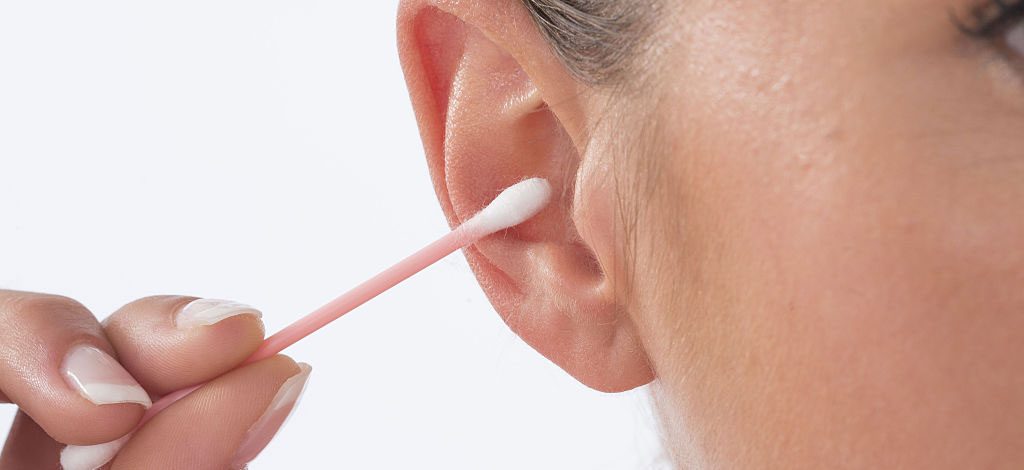How to Remove Ear Wax

You should properly remove wax buildup to prevent damage to your eardrum and ear canal. It can lead to hearing loss. Here's how to remove ear wax.
Ear wax is produced to lubricate your ear canal, trap dirt, and prevent debris from damaging your eardrum. Most of the time, ears are self-cleaning. The motion of your jaw gradually moves wax out of your ear. Once it reaches your outer ear, it dries and falls out.
Sometimes, however, wax does not move out on its own. That can be more than just unsightly and annoying. Earwax buildup can cause problems and may require professional help to remove.
YOU MIGHT ALSO LIKE: Inner Ear Infection Symptoms
Earwax buildup
If your body produces too much ear wax, it can accumulate in your outer ear faster than the natural cleaning process moves it out.
When that happens, many people will try to clean out their ears, which often pushes the wax deeper into their ear, causing symptoms such as:
- Fullness in your ear
- Feeling that your ear is blocked or plugged
- Reduced hearing
- Ringing in your ear
- Itching
- Earache
Untreated buildup can lead to an ear infection. Symptoms of infection include:
- Discharge or odor from your ear
- Ear pain
- Fever
- Dizziness
- Hearing loss on one side
If you have an ear infection, you will need to see a doctor.
How to remove ear wax in child and adults
If you simply want to keep your outer ear clean and help your body naturally remove wax, it is best to use a warm, wet washcloth. While you’re in the shower or bath, use the cloth to wipe your outer ear gently. Do not scrub too hard or dig into your ear canal, which can cause irritation and push wax further in.
If you have symptoms of ear wax buildup, you can try gentle home treatments to soften the wax and help it move to your outer ear. The American Academy of Otolaryngology - Head and Neck Surgery (AAO-HNS) — an association of ear, nose, and throat doctors — recommends several at home treatments.
Place a few drops of olive or mineral oil in your ear to soften the wax plug. You can also use glycerin, hydrogen peroxide, or a commercial earwax treatment from a drugstore. Tilt your head towards the opposite side while you treat the affected ear, leaving it tilted for several minutes so the treatment can reach the buildup.
As the wax softens, it will gradually move toward your outer ear, where you can use a washcloth to wipe it away. Do not insert anything into your canal to remove wax, which can damage your eardrum.
If you have a more substantial buildup, you can remove ear wax using a method known as syringing or ear irrigation. You can buy an at-home kit at a pharmacy or visit a doctor to have the procedure (which may cost you a lot more). Irrigation is often more effective when the wax is first softened using oil or hydrogen peroxide.
Visit a doctor to have wax removed if you have:
- A narrow ear canal
- Previous damage to your eardrum
- A weakened immune system
- Diabetes
- A skin condition affecting your ear
How to remove ear wax in babies
Babies and small children can also develop wax buildup. You may be able to see a wax plug in your baby’s ear simply by looking. Other signs include brownish discharge from the ear, a baby pulling or tugging on the ear, or a change in your child’s ability to hear you.
Because a baby’s ears are small and delicate, a doctor should remove any wax buildup.
Dangerous methods of earwax removal
People often use cotton swabs to clean their ears, but they can do more harm than good, according to the AAO-HNS. Cotton swabs push wax further into your ear, causing rather than preventing wax buildup. Any time you stick something in your ear, you also risk puncturing your eardrum. You should use cotton swabs to clean only the outer edges of your ear. Never insert them into your ear canal.
You should also avoid ear candles. These cone-shaped candles are intended to be inserted into your ear, then burned from the opposite end to draw wax out. The Food and Drug Administration discourages the practice, citing the danger of burns and lack of scientific evidence that candles provide any benefit.
When in doubt about the safest method for cleaning your ears and removing ear wax, it is always best to consult your doctor.
Updated:
June 30, 2023
Reviewed By:
Janet O’Dell, RN